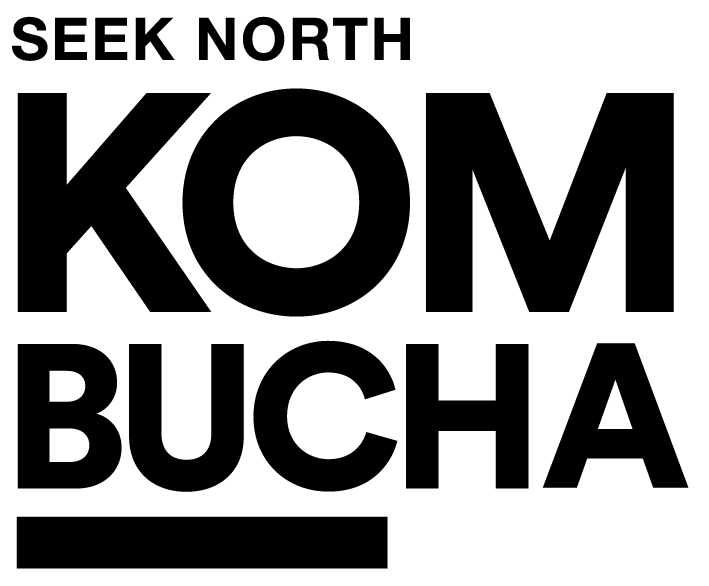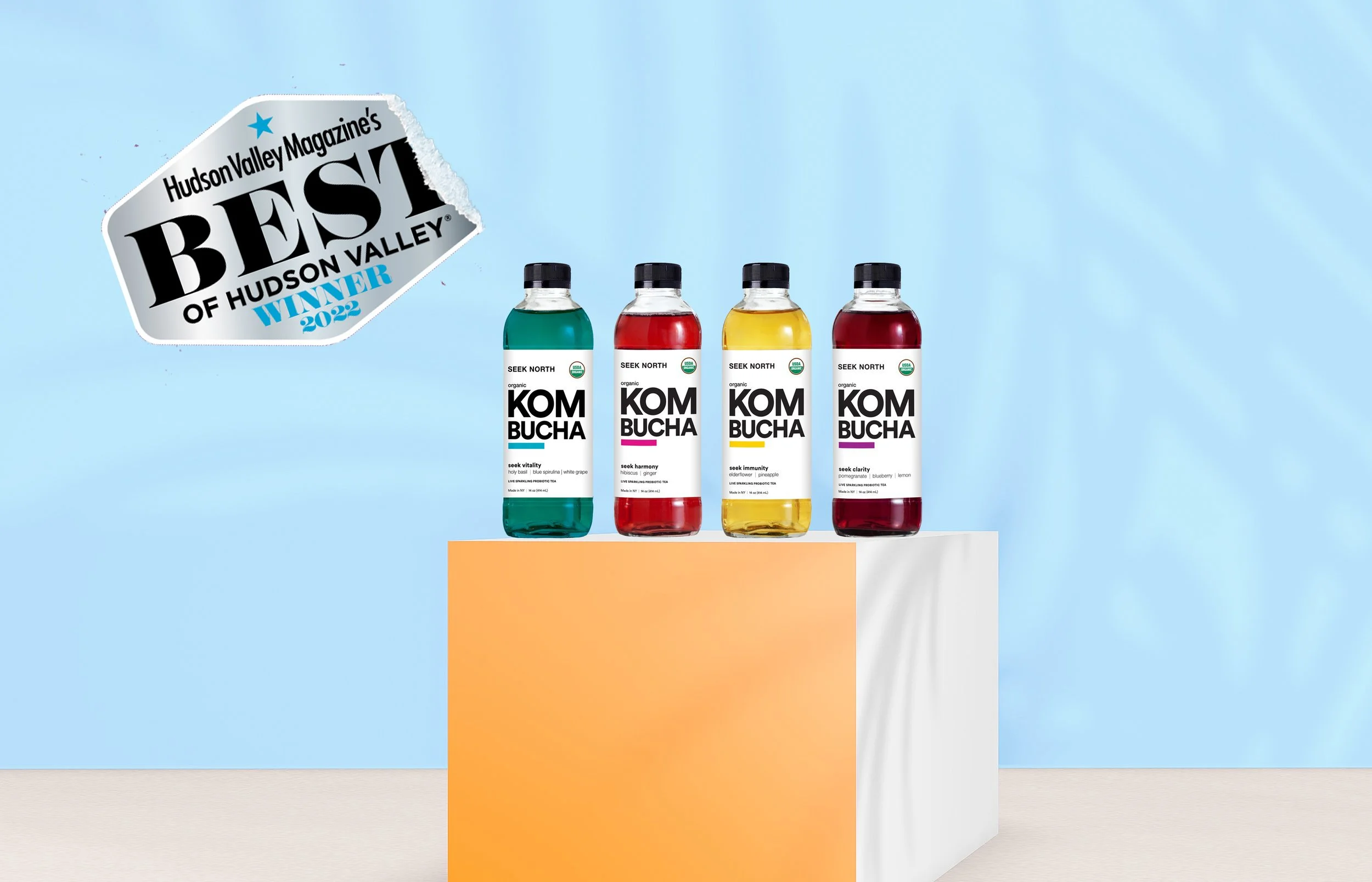Homebrewing- Interview With Philippe Trinh + How To Brew Your First kombucha
Start 2023 healthy and learn how to brew kombucha from our Brew Master, Philippe Trinh.
What started your passion for fermentation and kombucha?
I’ve always had a passion for all things sour and fermented. It really got underway when I began pickling our summer harvests at our home in Kingston, NY. We would have such large veggie bounties that I decided to preserve them to make them last longer. With those harvests, I make craft pickles like scotch and lime cucumber pickles, Sriracha kimchi, and kombucha using our garden herbs.
A few years ago Julian got sick with Neurological Lyme Disease. It’s a terrible and debilitating disease, but it forced us to really take account of what we were eating and drinking. Julian and I learned that 70-80% of our immune tissue lies within our digestive tract, so we decided to get serious about our health, especially our gut health.
We decided to jump start both of our bodies and make our health a priority. As part of that health journey, I began home brewing kombucha. I was producing so much that it eventually led to the birth of our kombucha company, Seek North.
Can you describe your process for making kombucha?
Julian and I are traditionalists at heart, so we brew kombucha authentically. We use all organic teas and organic ingredients, we don’t dilute our product, and we never use artificial sweeteners, colors, or synthetic flavors. This means our kombucha is 100% certified organic, which makes it a premium and healthy drink.
Seek North kombucha is raw, meaning that we don't pasteurize or kill off any beneficial bacteria or yeast content. I like to homebrew, and I wanted to keep our commercial processes very similar to my home brews. All our R&D for flavors is actually done home-brewing in our own kitchen in Kingston, NY.
Most of our homebrew and commercial kombucha is a mixture of green and black tea. Black tea is full of polyphenols, which are great antioxidants, but it also promotes healthy growth of the so-called ‘mother’ of kombucha, SCOBY (symbiotic colony of bacteria and yeast). Green tea has a nice light viscosity in weight compared to black tea, so when you mix the two together it creates a mild tea that can complement even the most subtle flavors like jasmine or rose petals.
We ferment our kombucha for about two weeks before we go into a second fermentation process, at which point we add exotic herbs and/or fruits. We also don't filter our kombucha, so you can see some nice yeast sediment at the bottom of our product. That is a key indication of something that is not pasteurized or processed.
We keep a very close eye on every ingredient and every step in the whole process in order to ensure that we’re producing something we’re really proud of.
Why should people consider making kombucha at home?
First of all, booch—as we often call it—is delicious, and it’s also full of goodies for your gut. It is fermented and naturally carbonated, which makes it unique among beverages. It’s low in sugar and packed with naturally occurring probiotics, antioxidants, vitamins, enzymes, and amino acids.
There’s no question that home brewing kombucha has taken off recently, and brewing kombucha can be hard and extremely intimidating initially. The potential for mistakes is infinite, and it can actually be dangerous if done incorrectly.
On the other hand, brewing kombucha at home can be safe, fun, and rewarding if you follow proper instructions and adhere to high hygiene standards. Brewing your own kombucha can be very cost-effective and sustainable. For the price of one kombucha purchased at retail price, you could make ten gallons of kombucha in the comfort of your home.
Before we even start to talk about brewing, we cannot overly stress the importance of making sure everything is clean and sanitized.
Your kombucha SCOBY is a living bacteria, and it’s still susceptible to bad bacteria. Before and during the entire brewing and fermenting process, keep all surfaces, bottles, and your hands clean and sanitized.
Soaps or any chemical residues can potentially harm your SCOBY, so I like to run everything through the dishwasher and then use a simple water and vinegar solution (50/50 mix) in a spray bottle to clean and rinse everything.
This spray bottle can also be used to clean all working surfaces and to constantly clean our hands during the brewing process.
Where is the best place to find a SCOBY to start making kombucha?
The best way to obtain a SCOBY is to find someone who brews kombucha (for example, a kombucha brewer at a farmer’s market or a friend that home brews). Chances are they will have lots of extra SCOBYs to spare. This way you can ensure that the SCOBYs will produce kombucha that is tasty, healthy, and palatable.
At Seek North, we also sell organic SCOBYs on our website. Our SCOBYs are fed with organic cane sugar and organic teas. This is the same strain of kombucha cultures that is used to brew New York’s favorite premium organic kombucha. On our site you can purchase a large organic SCOBY with enough kombucha starter to brew a half gallon of kombucha. The SCOBY also comes with super easy-to-follow directions on how to brew kombucha.
Whatever you do, don’t purchase an online kit that includes a dehydrated SCOBY and uses vinegar as kombucha starter. A living, raw SCOBY is filled with living bacteria and yeast. When you dry it, you destroy its balanced living culture. I’ve never heard of a successful brew that utilizes one of those dried kits. Instead, find a trusted kombucha brewer, as I recommended above.
What are some great tips for at-home kombucha brewers to keep in mind, and what are some things to avoid?
To ensure a good batch of kombucha you must limit contamination. This means fully sterilizing glass jars & all brewing equipment, washing your hands completely (don’t use antibacterial soap as it can harm the SCOBY), and wiping down all surfaces with a 50/50 vinegar/water solution. When handling your SCOBY, make sure to use lots of white vinegar to keep your hands clean from any bacteria.
- If your booch tastes very vinegary or tart, try going with a blend of black and green tea. Kombucha made with all black tea can be fairly strong, so mixing some green tea in there will help make the taste lighter and less tart.
- Your first initial brew of kombucha will likely taste very vinegary or tart but the flavor will round out and get smoother with each subsequent batch of kombucha that you make.
- I like to pull my kombucha when it’s still slightly sweet and then bottle it (in an air tight bottle) with about 10% of cold pressed juice or sliced fruit and/or herbs. Depending on the temperature of your home, I would leave this second ferment on the counter for 2-5 days until carbonated then refrigerate.
*Additional notes about 2nd fermentation:
Flavors and bottling. Once you have your base perfect, you can bottle and store in the fridge (this is raw, original, and un-carbonated kombucha at this state). For carbonated plain/original kombucha, bottle the kombucha when it’s just about done in an airtight bottle and leave on the counter for 2-4 days so it can continue to ferment and build carbonation.
Or you can add some other flavors for a flavored kombucha. This second fermentation is where you can add your own perfect blend of fruits, juices, flowers and/or herbs, and leave it to ferment again at room temperature. This second fermentation can last anywhere from a couple days to a week. A second ferment also lets more bubbles build up so be sure to be tasting your brew daily during second fermentation and burp your bottles daily to prevent any explosions.
In this fermentation, you’re going to want to have your brew, and ingredients, in a tightly sealed container. We prefer air-tight swing top bottles and growlers with polycone liners. This allows for maximum carbonation and flavor infusions to happen. Lastly, before you begin a second fermentation, make sure you’ve reserved at least 2 cups per gallon of your simple base with your SCOBY, so you can brew a new batch of kombucha later.
Are there any ingredients or flavors that should not be used in kombucha?
Stay away from flavored teas that use infused oils, as these can harm your SCOBY. Do not use artificial sweeteners or sugars; only use organic cane sugar. Don’t substitute vinegar for starter kombucha.
BASIC KOMBUCHA BREWING INSTRUCTIONS
Basic 1 Gallon Kombucha Recipe
13 cups water (distilled water)
5 organic tea bags (black/green or combo of both)
1 cup organic cane sugar
2 cups kombucha starter from your last brew
Directions:
1. Boil water and add sugar and tea
2. Lightly stir and leave and steep with lid on for 20-30 min
3. Let cool to room temp and pour the sweetened tea into your clean glass gallon vessel/jar.
6. Add 2 cups of kombucha starter tea, lightly mix, then add your SCOBY into the jar.
8. Cover with a cloth and secure with a rubber band. Place in a warm place out of direct sunlight. Wait 7-14 days until your booch is at correct PH level.
Do not touch/move or disturb your kombucha before the 7 days.

